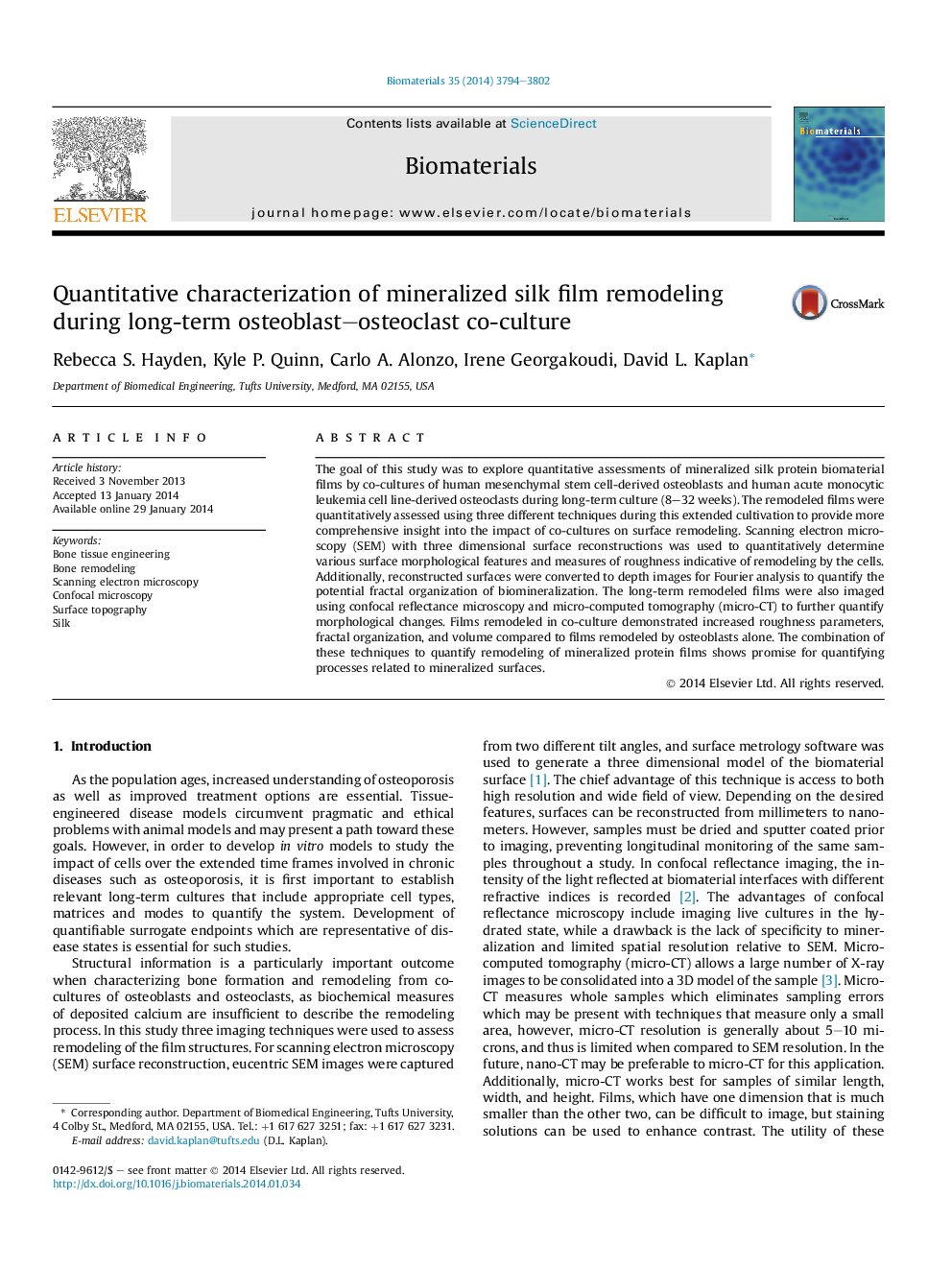| Article ID | Journal | Published Year | Pages | File Type |
|---|---|---|---|---|
| 6090 | Biomaterials | 2014 | 9 Pages |
The goal of this study was to explore quantitative assessments of mineralized silk protein biomaterial films by co-cultures of human mesenchymal stem cell-derived osteoblasts and human acute monocytic leukemia cell line-derived osteoclasts during long-term culture (8–32 weeks). The remodeled films were quantitatively assessed using three different techniques during this extended cultivation to provide more comprehensive insight into the impact of co-cultures on surface remodeling. Scanning electron microscopy (SEM) with three dimensional surface reconstructions was used to quantitatively determine various surface morphological features and measures of roughness indicative of remodeling by the cells. Additionally, reconstructed surfaces were converted to depth images for Fourier analysis to quantify the potential fractal organization of biomineralization. The long-term remodeled films were also imaged using confocal reflectance microscopy and micro-computed tomography (micro-CT) to further quantify morphological changes. Films remodeled in co-culture demonstrated increased roughness parameters, fractal organization, and volume compared to films remodeled by osteoblasts alone. The combination of these techniques to quantify remodeling of mineralized protein films shows promise for quantifying processes related to mineralized surfaces.
